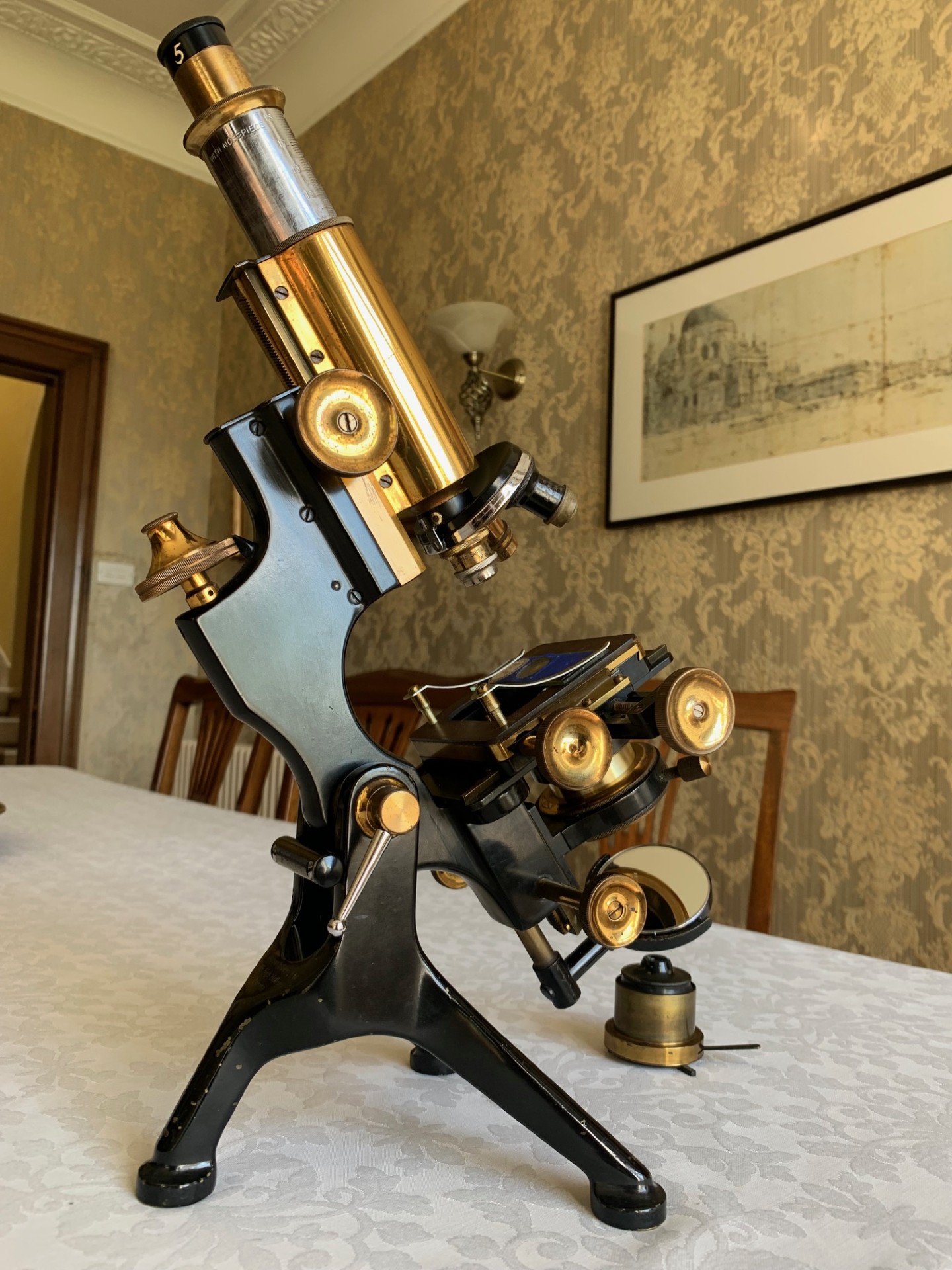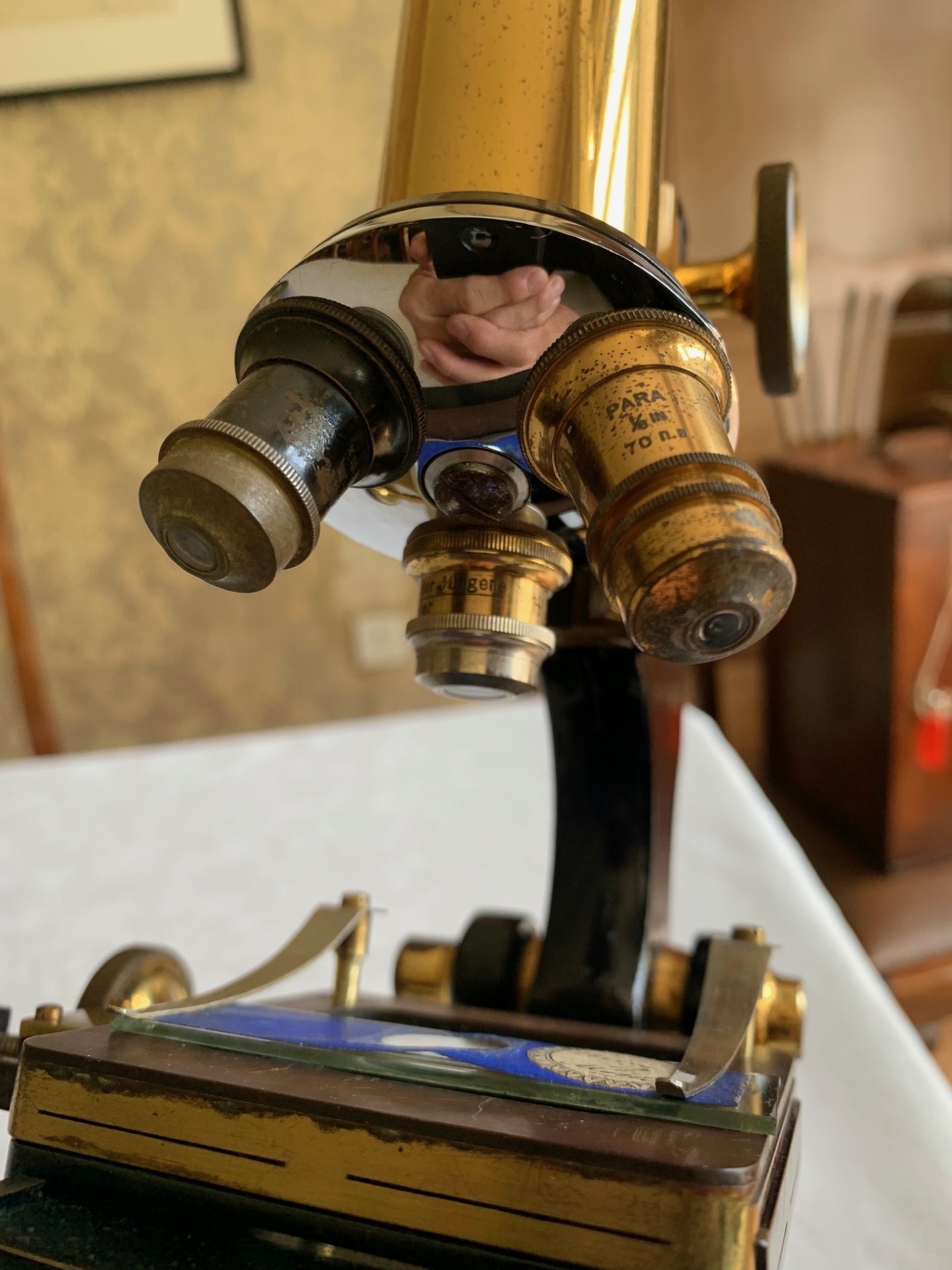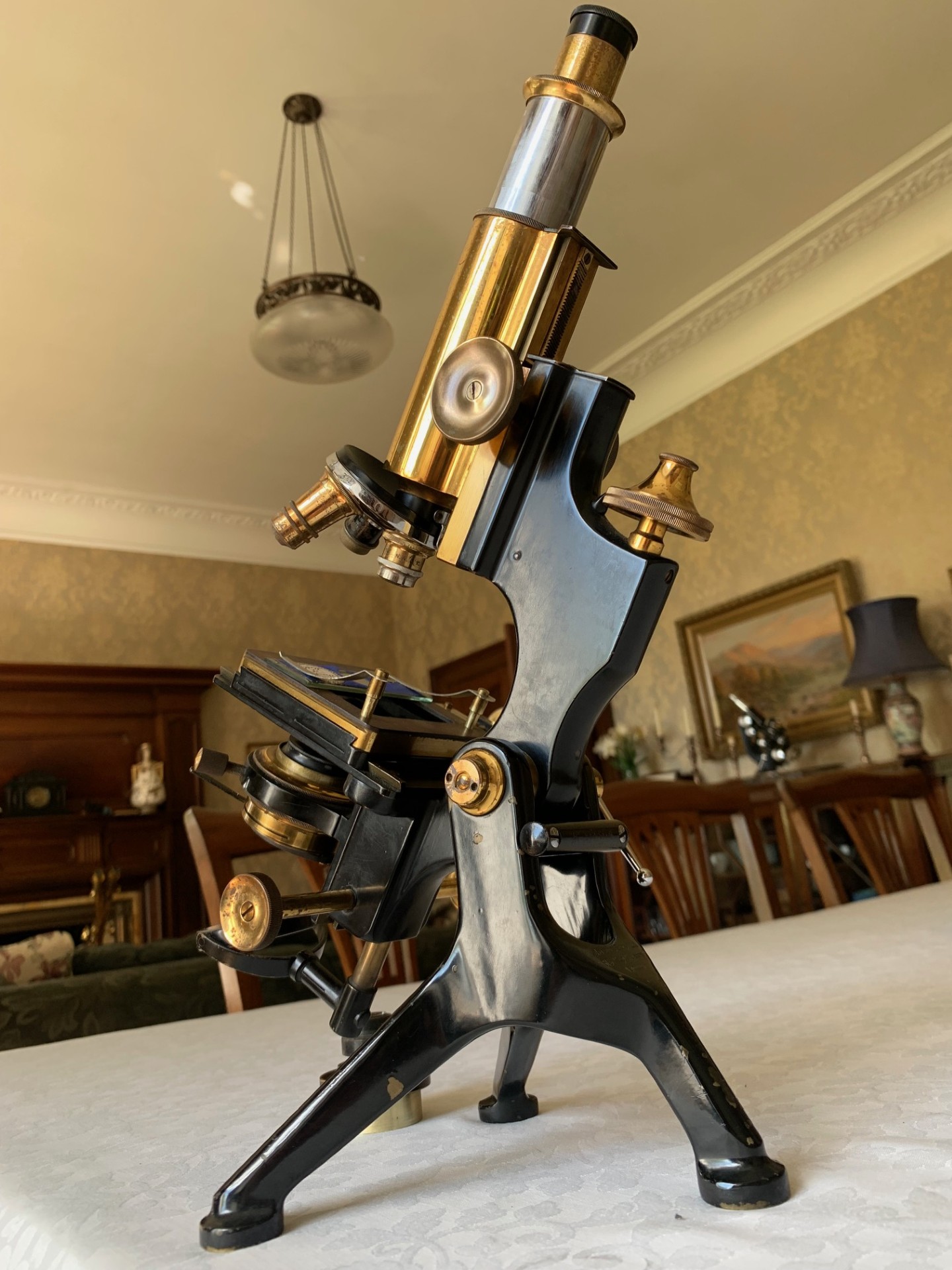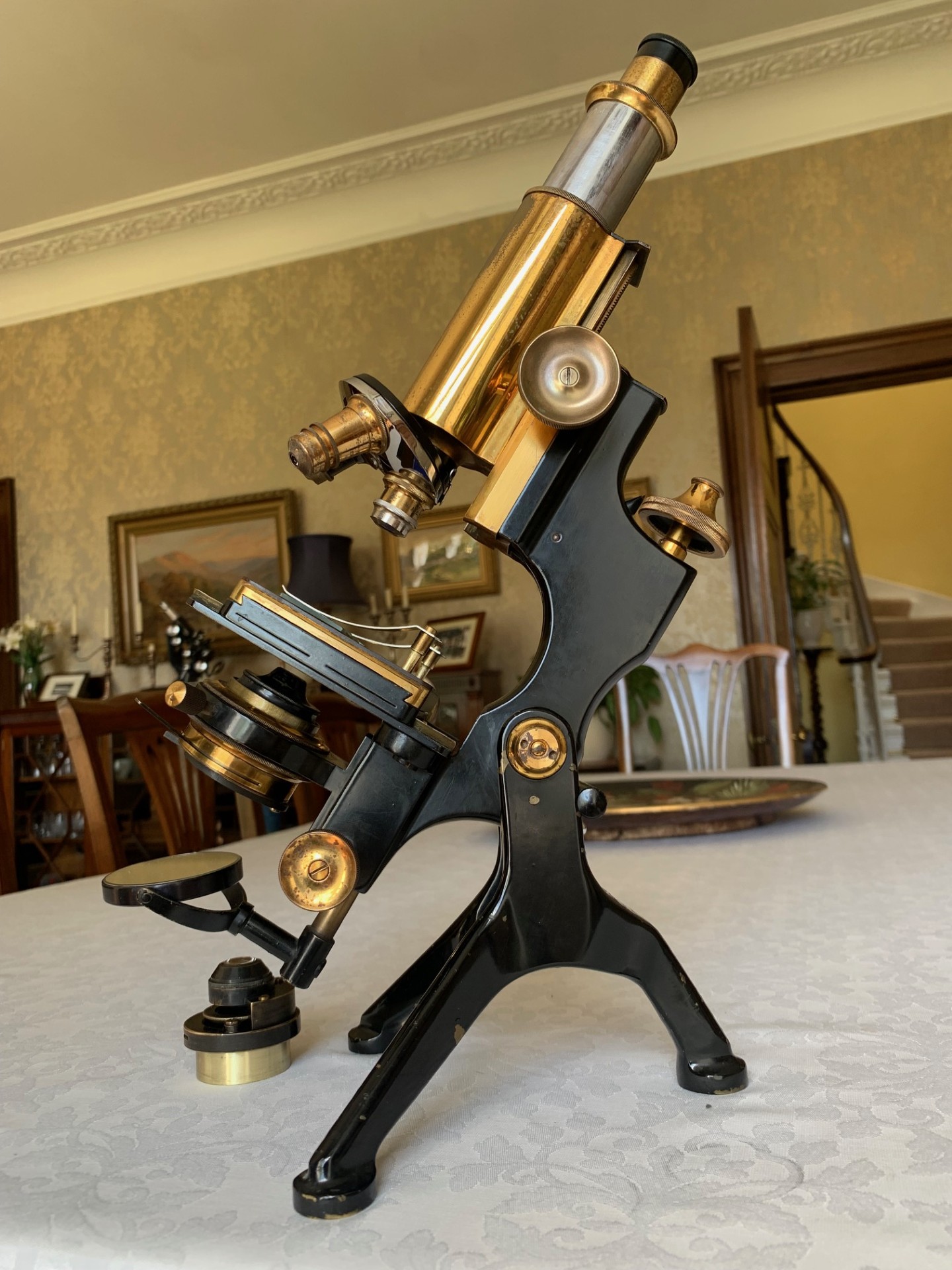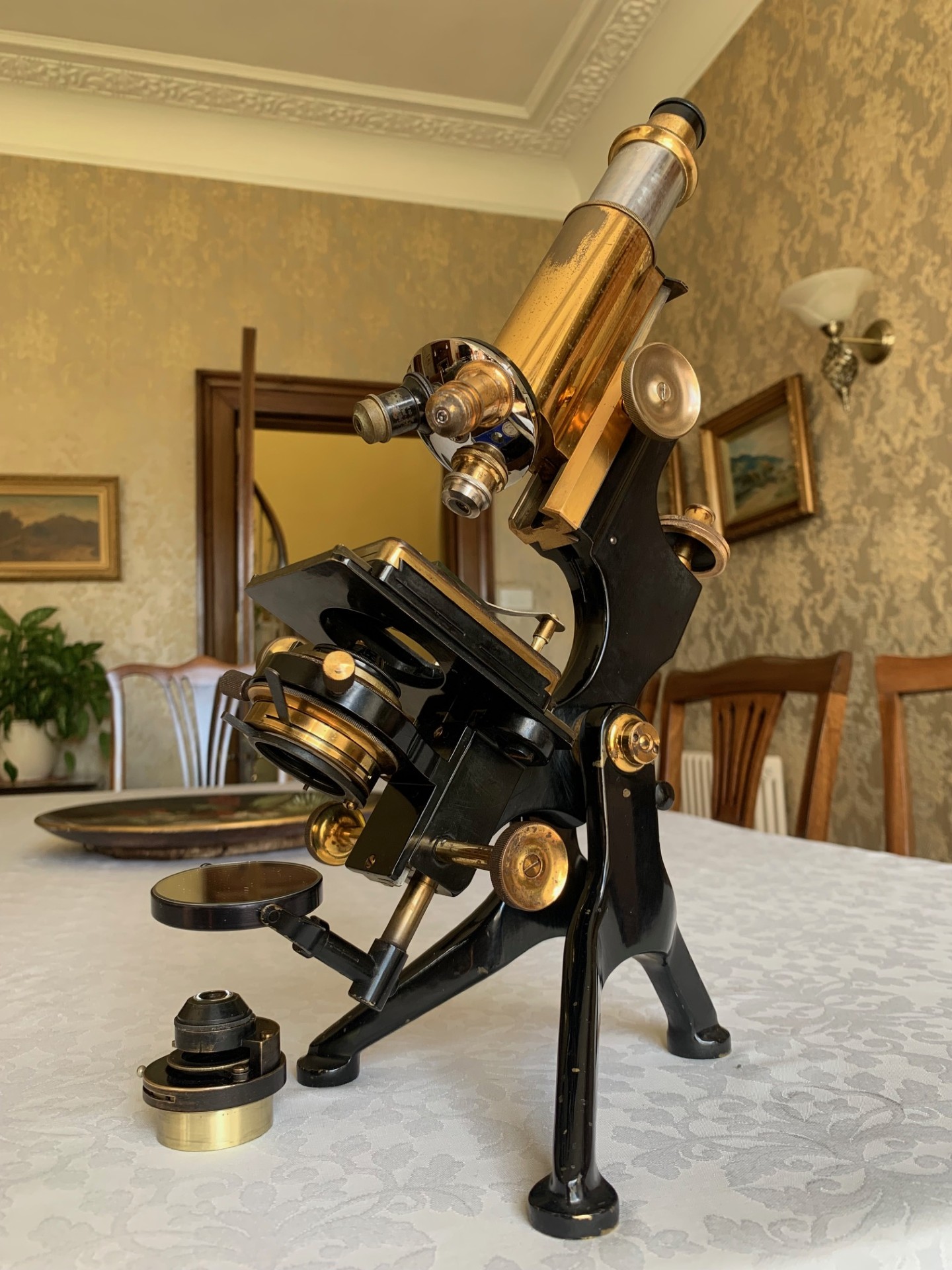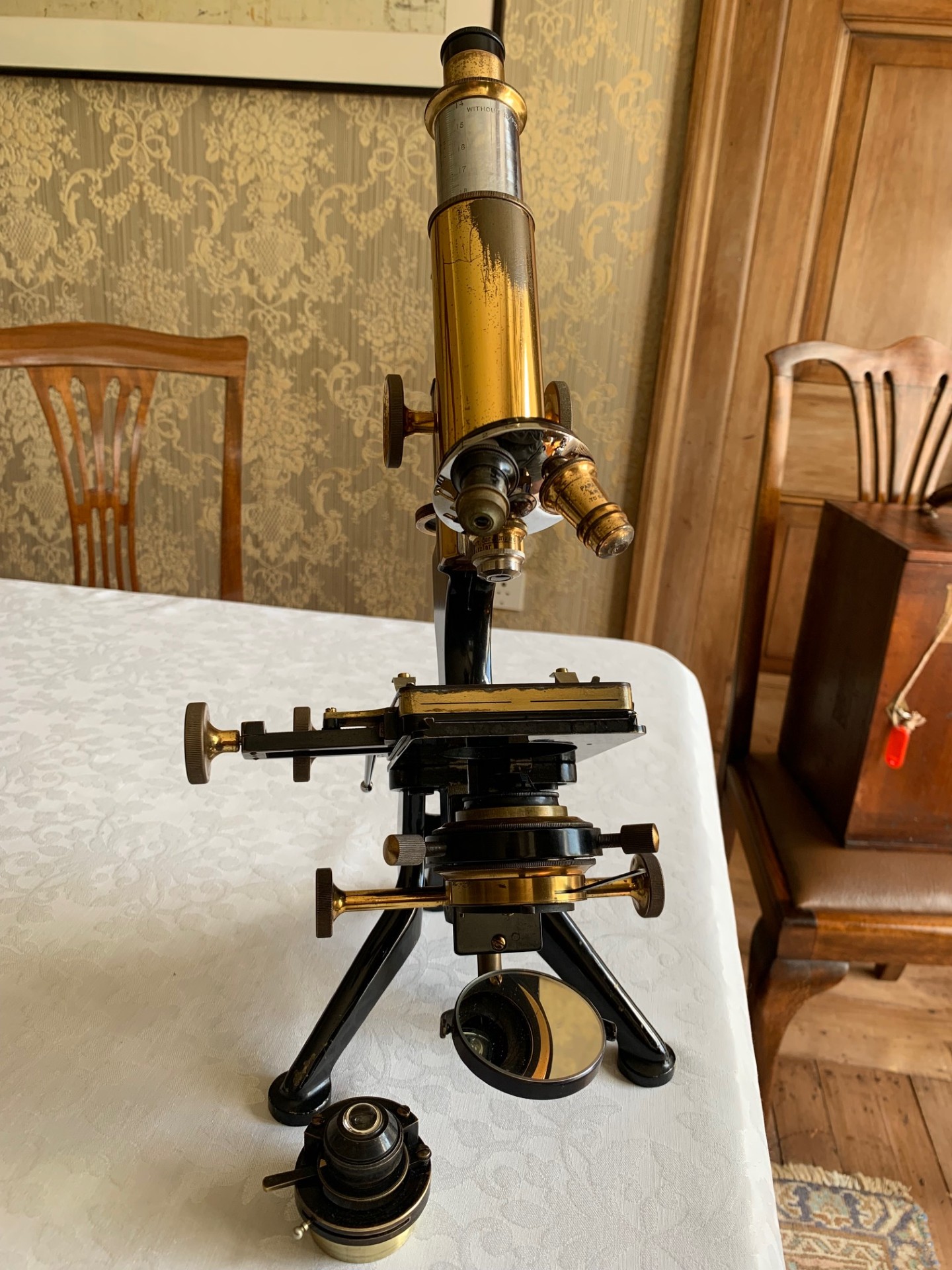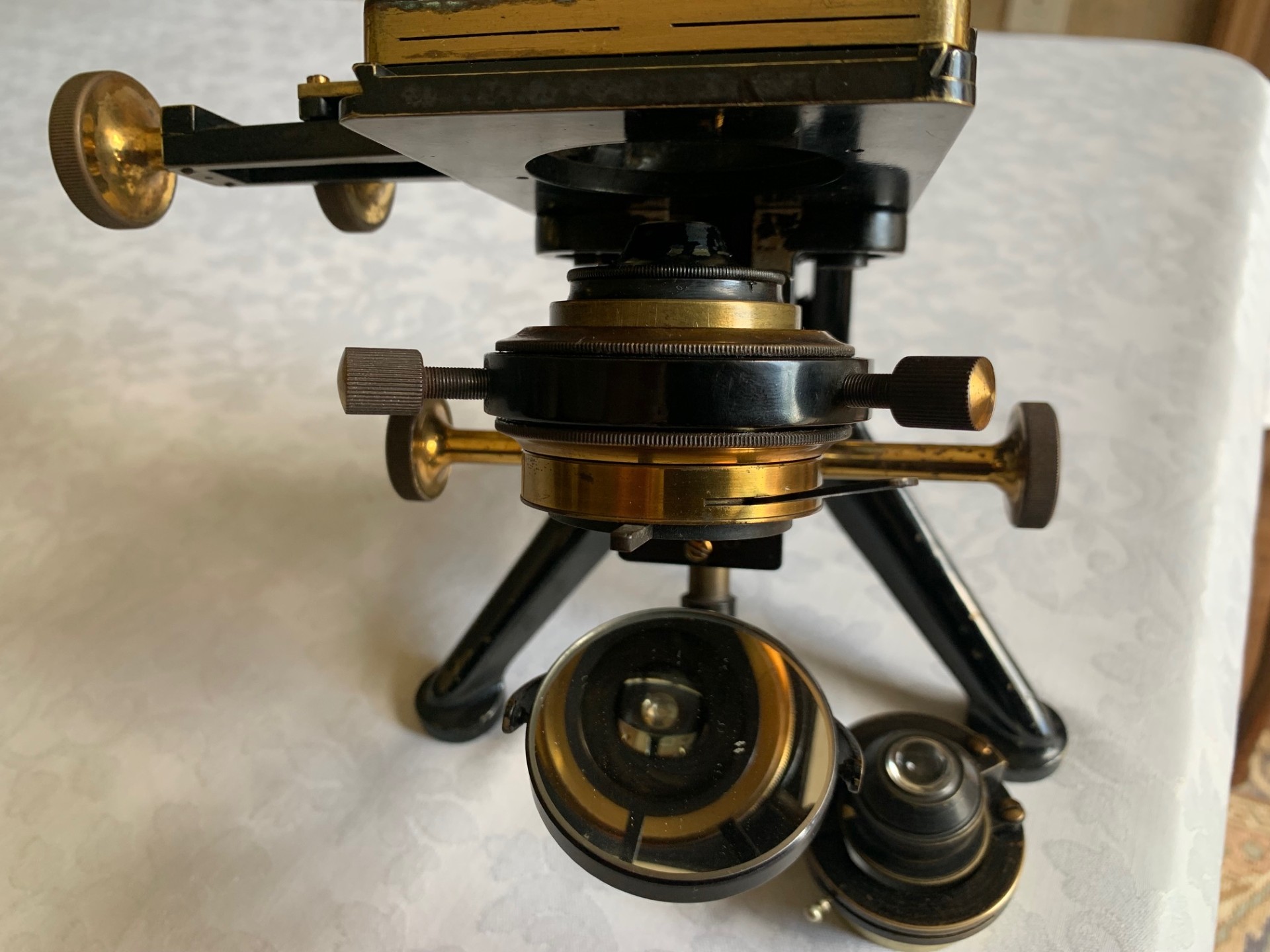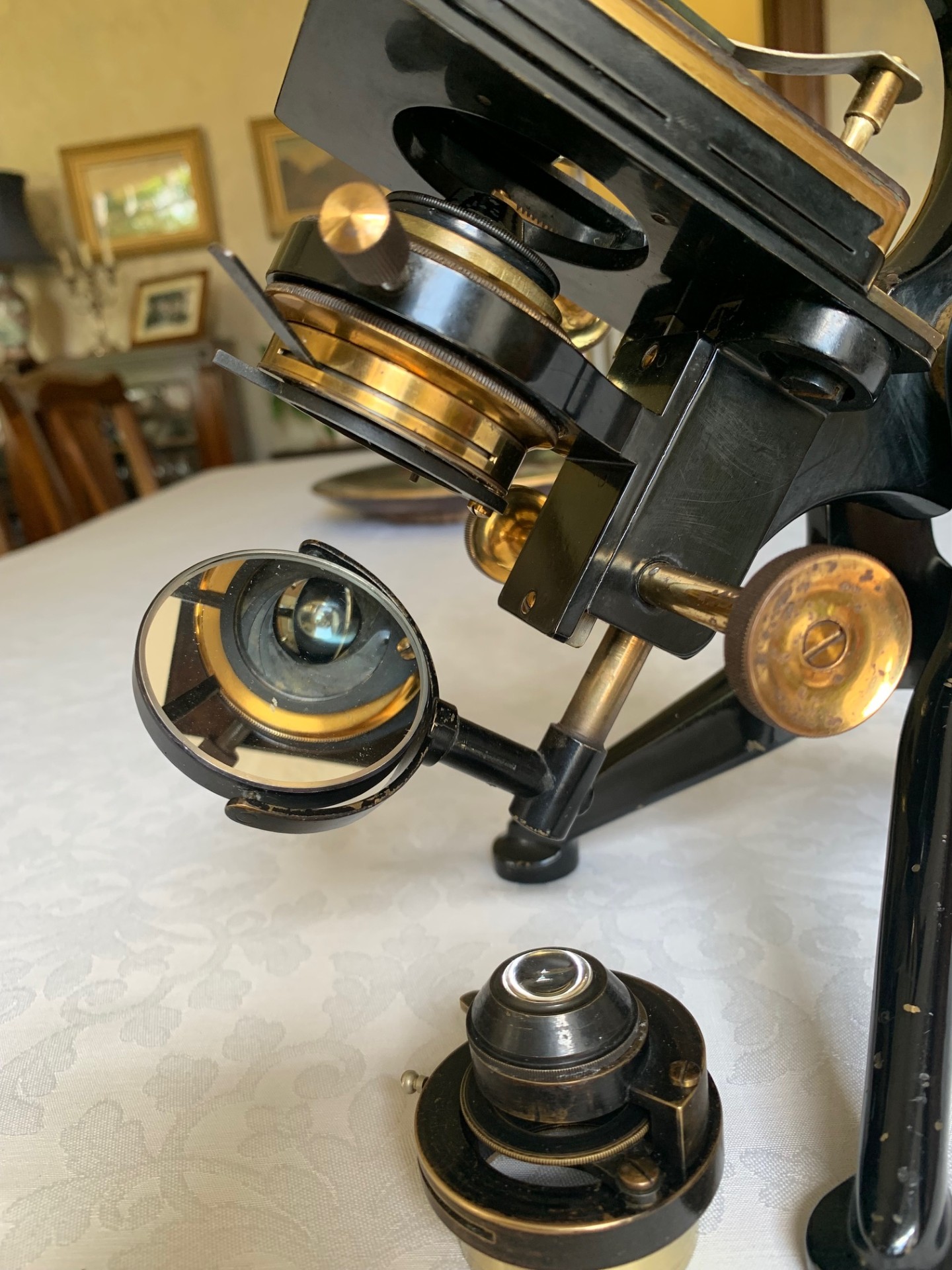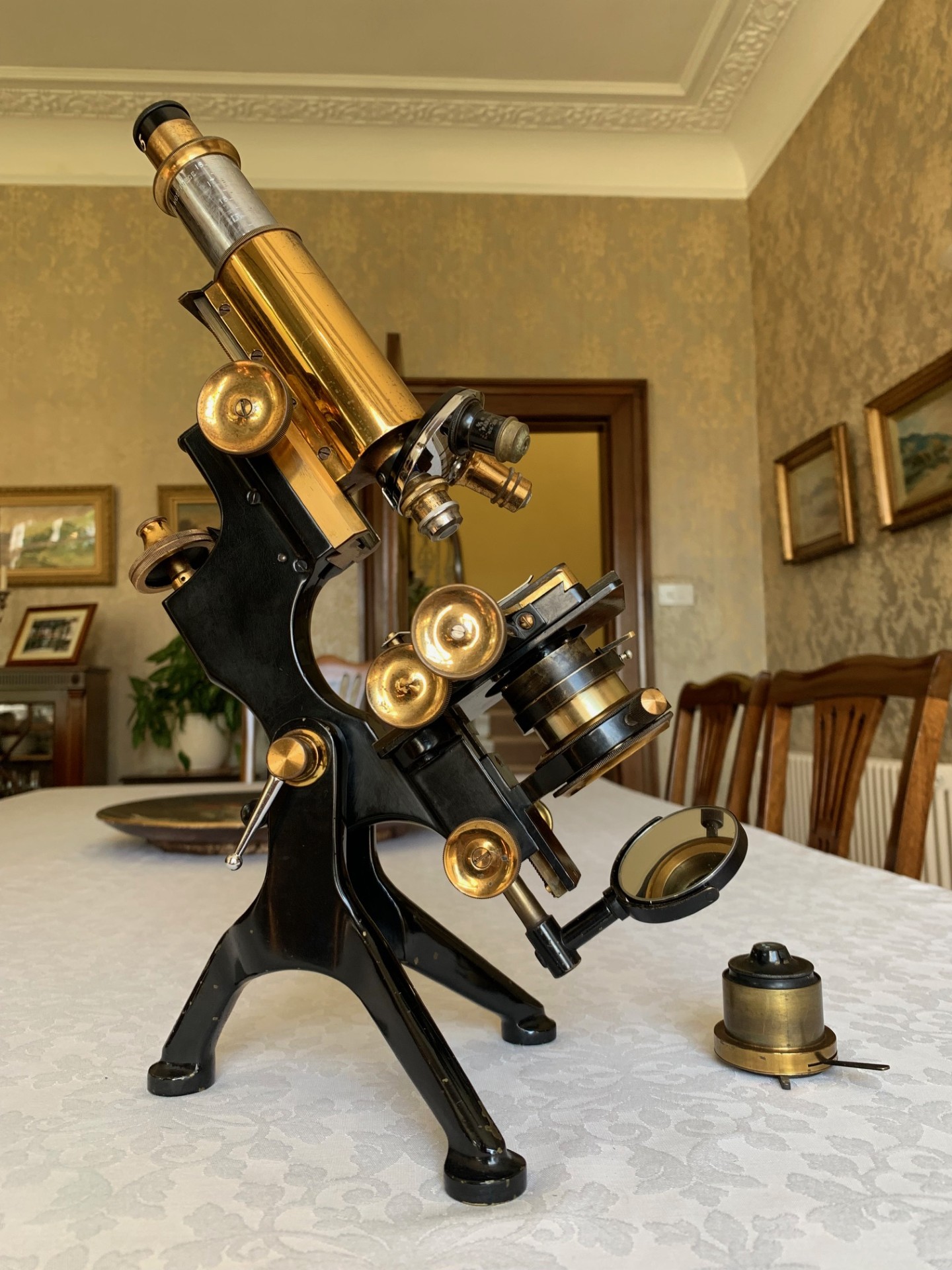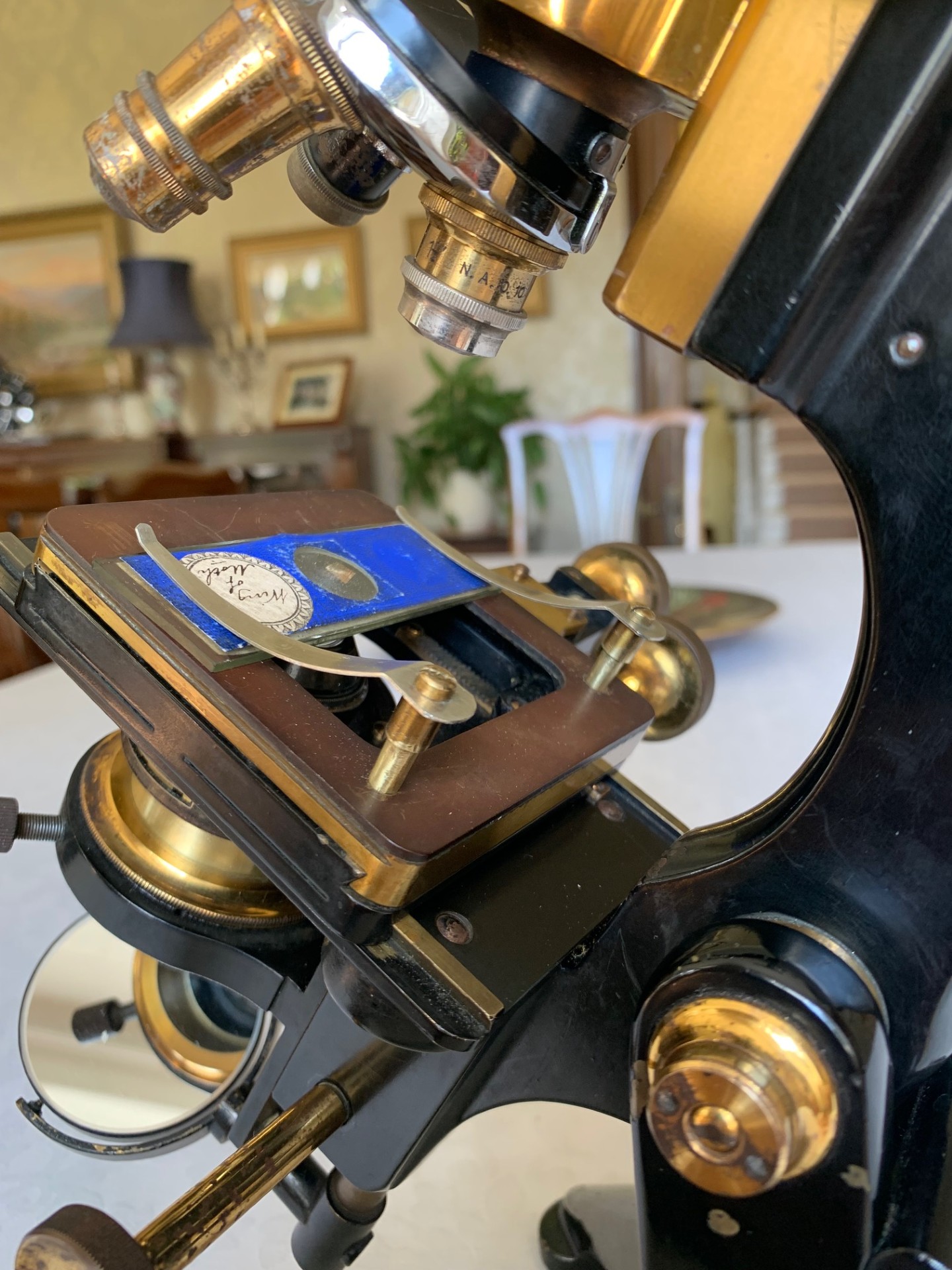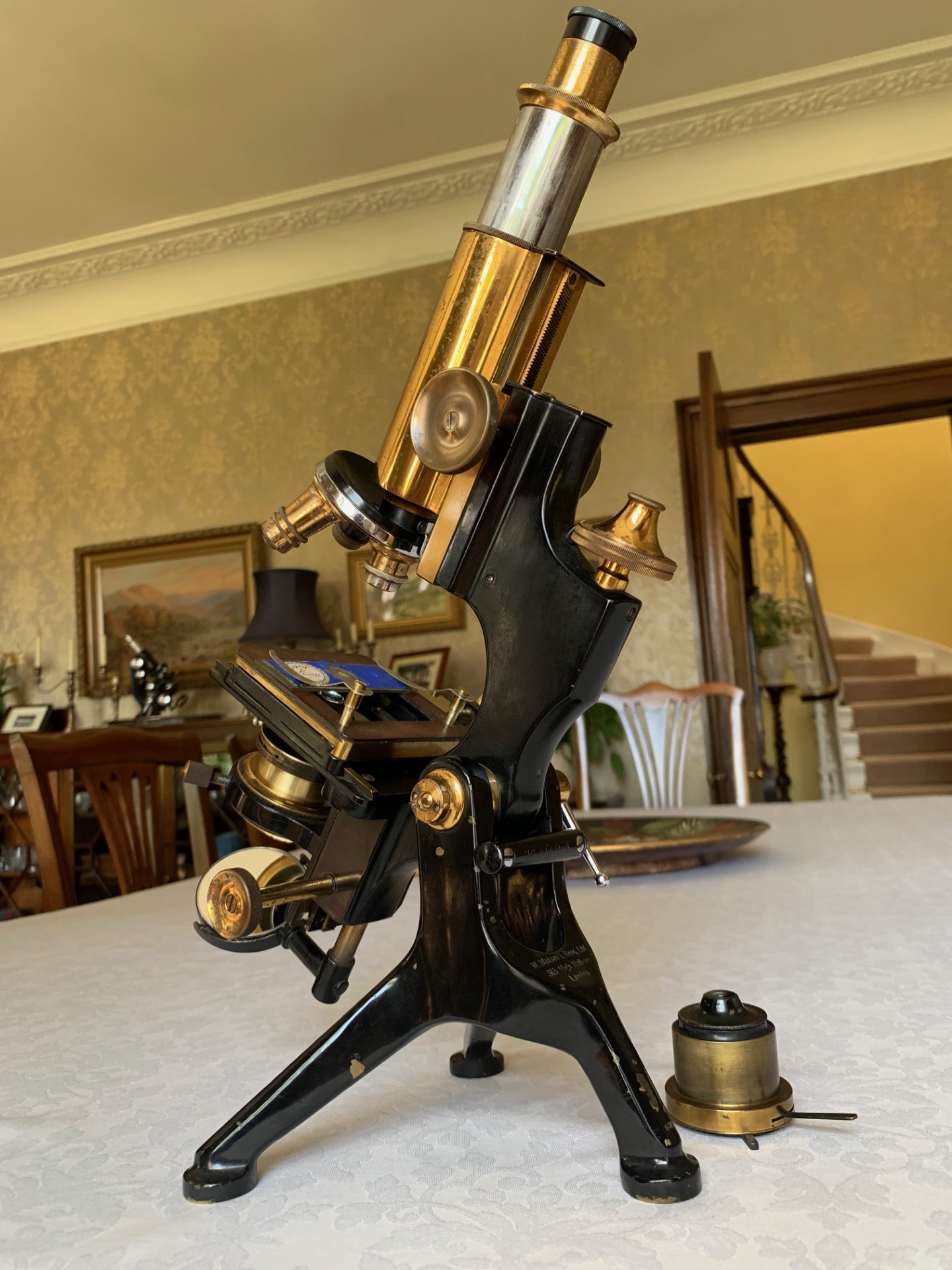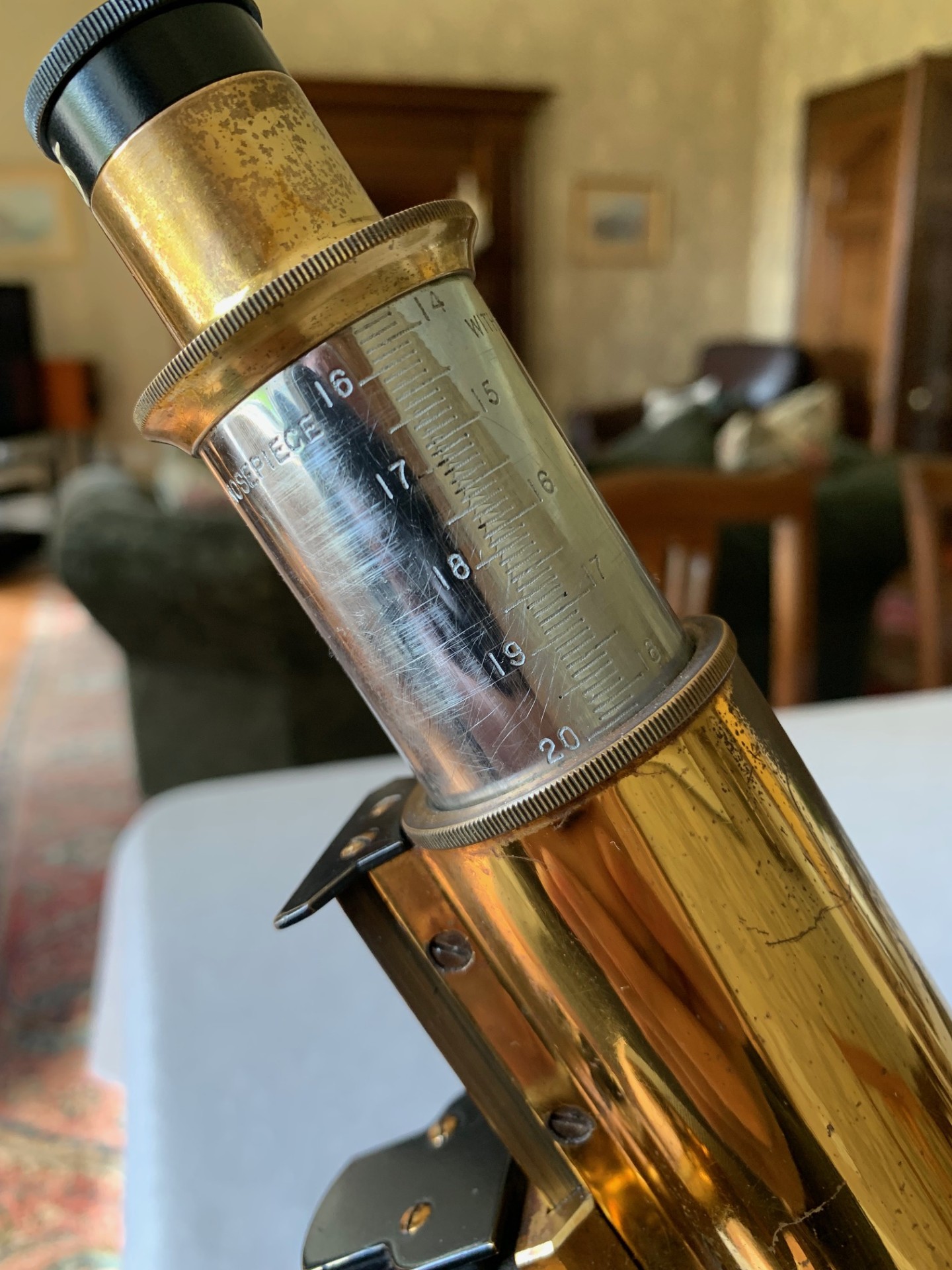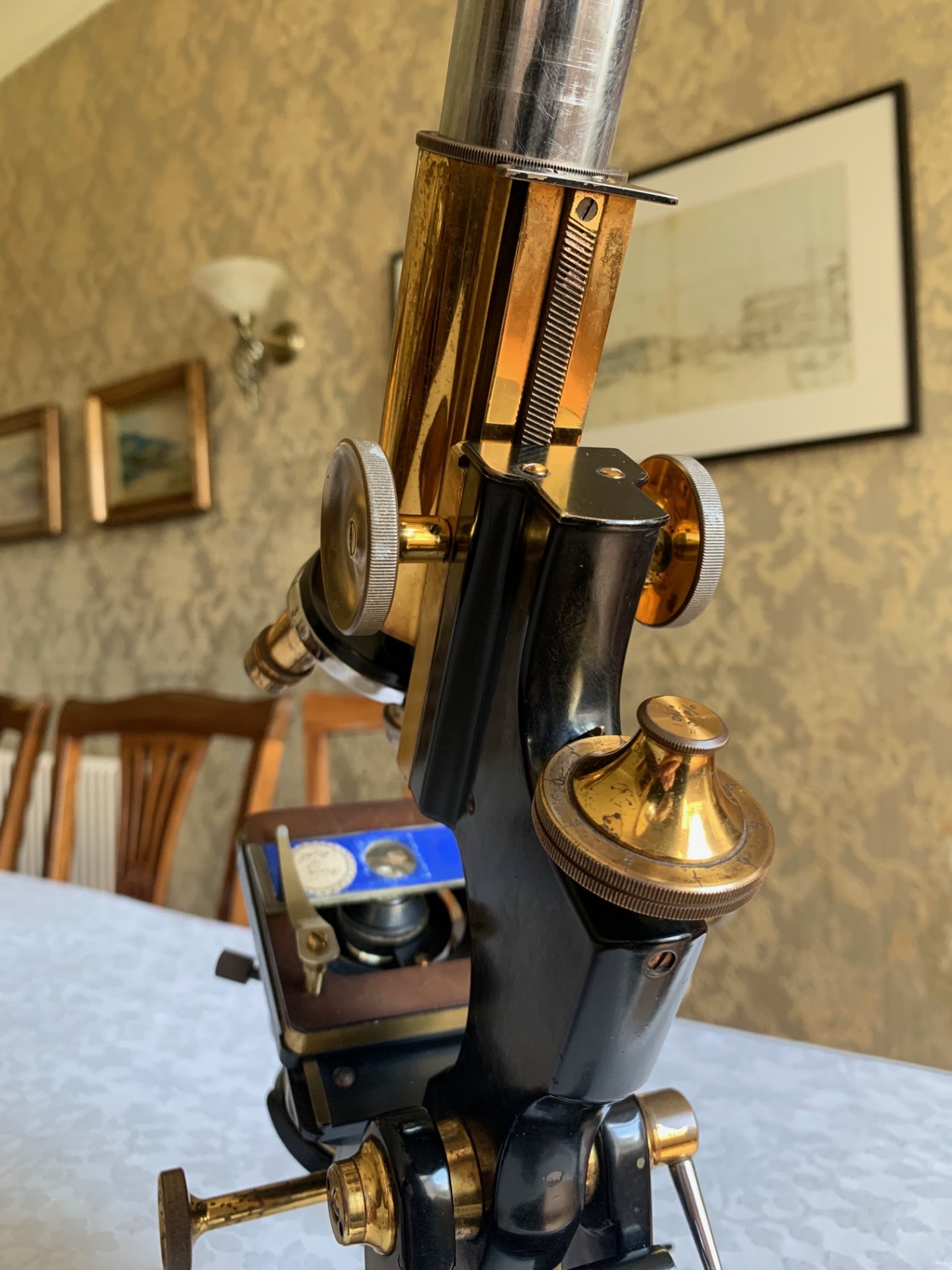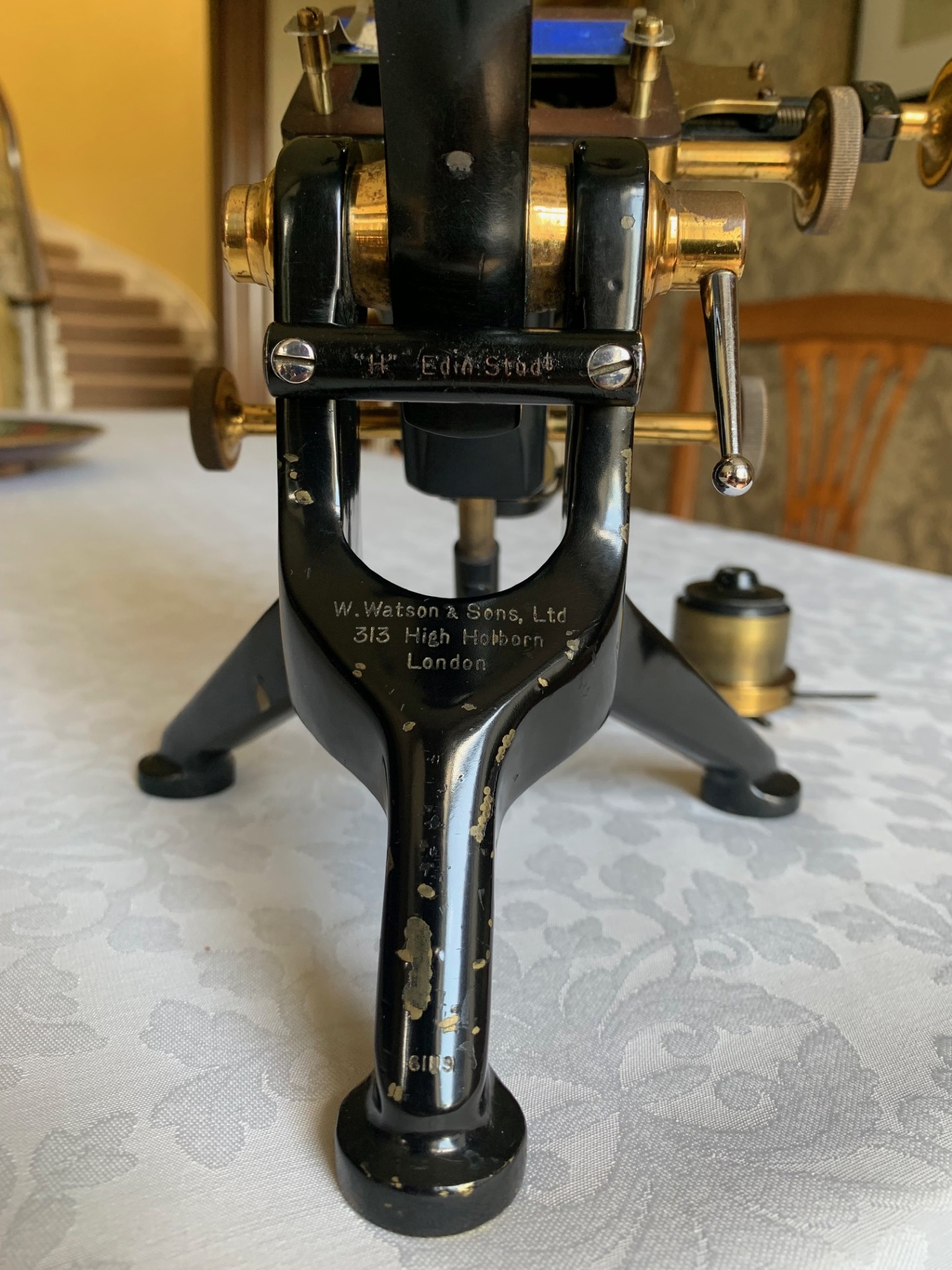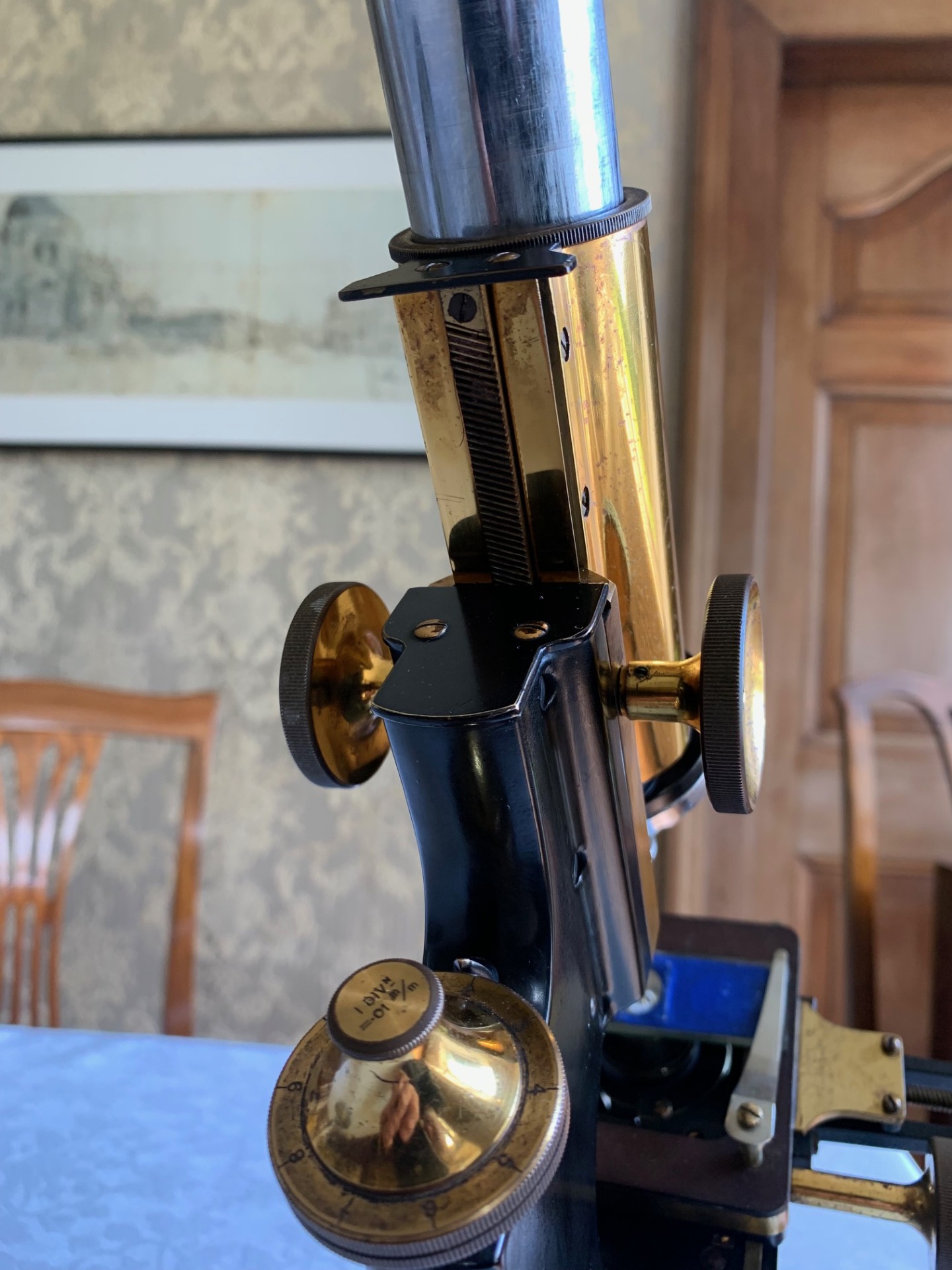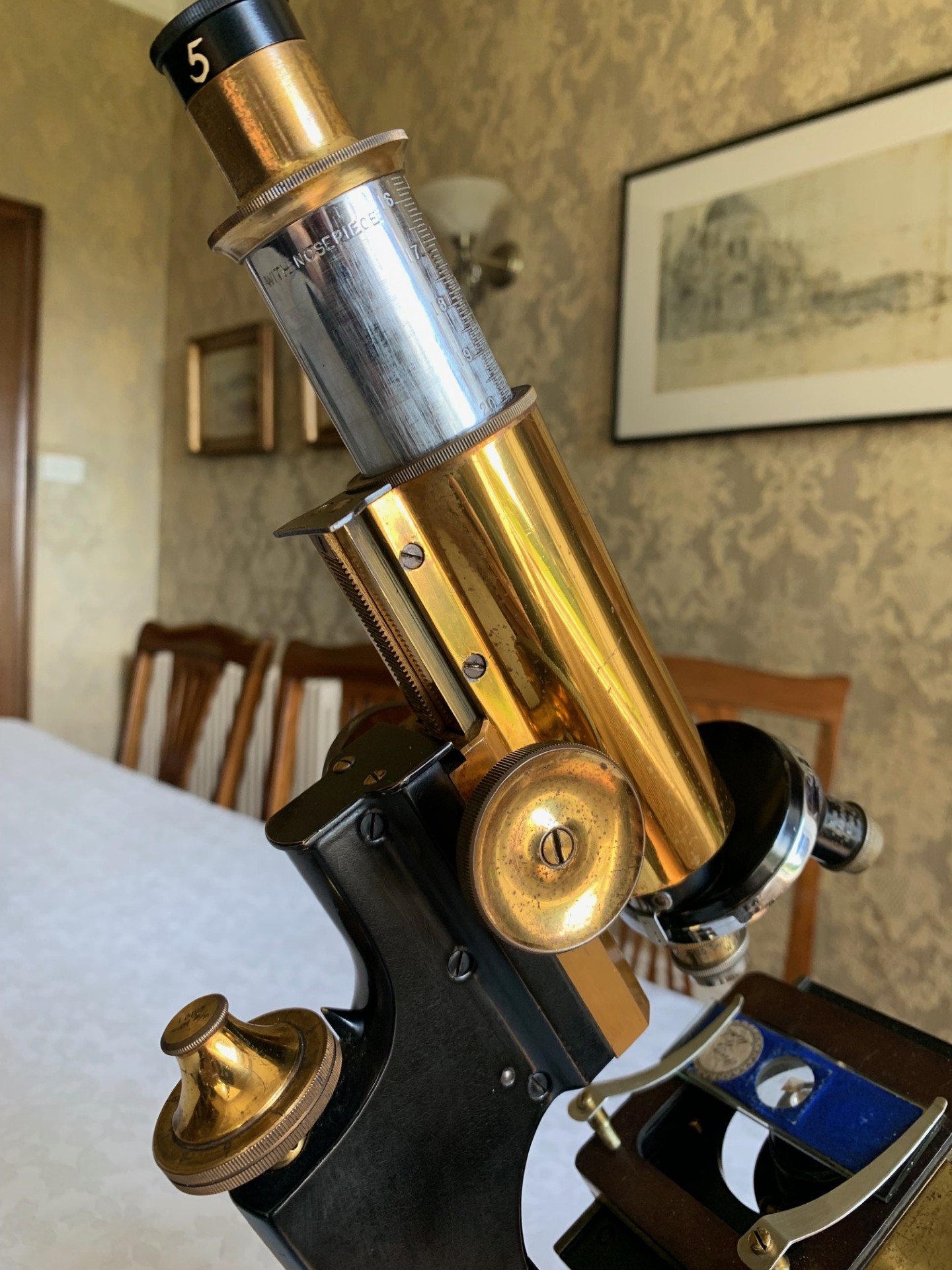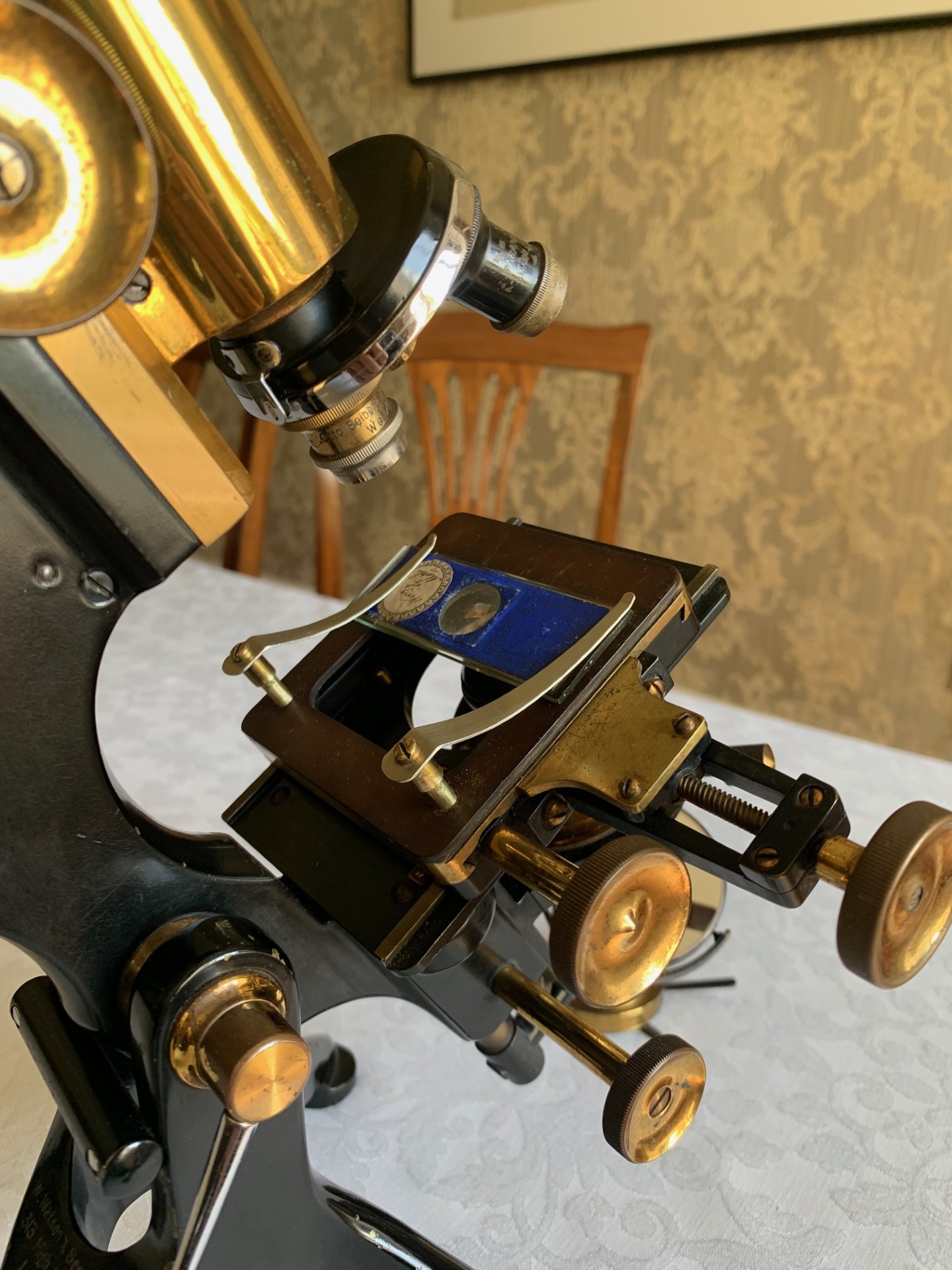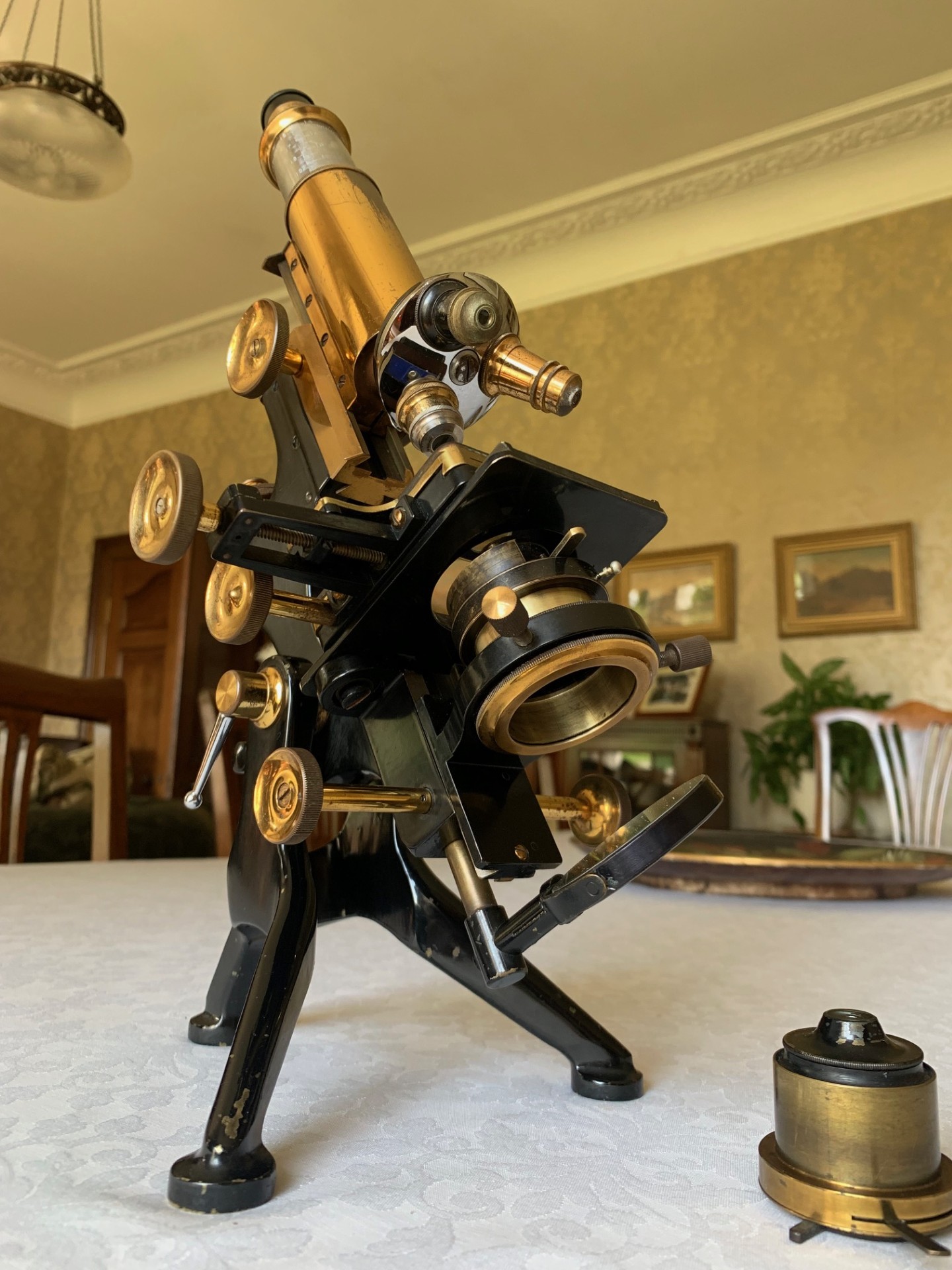SOLD – Vintage W. Watson & Sons Ltd – Edinburgh-H Brass Microscope – circa 1936
Sold
Generally good cosmetic condition example of Watson's popular Edinburgh-H model. This is fairly a late model Edinburgh-H dating to around 1936.
Circa
1936
Maker
W. Watson & Sons Ltd
Country of manufacture
UK and Ireland
Description
Offered for sale is a late model example of Watson’s Edinburgh Student’s Stand-H model microscope in brass – it dates to 1936 based on its serial number 61119. This is a generally good cosmetic example with a few signs of wear and lacquered brass-work that’s retained condition, with the exception of some rub-marks on the top of the main optical tube and one of the coarse focus thumb-wheels – both shown in close-up in the listing photos. I hope that the listing photos do the instrument justice and showcase its visual appeal.
The Edinburgh pattern model of microscope was produced by Watson between 1887 and around 1945; its long production run giving us a firm clue regarding just how good this model of microscope was in its heyday and over that long production cycle Watson regularly updated and improved the model, so what you see here is a fairly late example with many of the final iterations of design and development for this model. For example it’s got the later more upright cast brass tripod and the stage is now attached to the limb and tailpiece. The Edinburgh stand was originally developed by Watson in collaboration with a professor and lecturer in bacteriology at the University of Edinburgh, hence the Edinburgh designation. With its signature rear cross-member giving that classic “H” look and nice lacquered brass-work, the Edinburgh H is a fine example of British optical engineering with a design and style essentially dating back to the Victorian era.
Turning to the technical details, the instrument stands on a cast brass tripod foot with twin uprights supporting the pivot, with tension lever adjustment and Lister-limb arrangement. The coarse focus is via rack and pinion with good smooth action that holds in position on adjustment. Fine focus is operated via a separate brass thumb-wheel located at the rear of the upper limb which operates an internal lever system acting against sprung resistance. The focusing technique being to achieve near focus with the coarse thumb-wheels, then fine-tune with the single rear thumb-wheel, which only has a fairly small range of movement via its vernier screw mechanism.
With the optics, this Watson microscope comes fitted with a period graduated chromed eyepiece draw-tube inside a brass main optical tube and there’s a vintage eyepiece by Watson that with adequate illumination produce very good images:
– No. 2 – 6x magnification – Watson
It’s also got threer period objectives and a Watson triple turret in chrome which rotates freely with a nice positive feel as the objectives align to the viewing position. The objectives are as follows:
– 1.5 inch in brass – Otto Seibert Wetzlar – 4x magnification
– 2/3rds inch in brass – Watson – 10x magnification
– 1/6th inch in brass – Watson – 40x magnification
Overall therefore, the range of magnification available with this Watson ranges from about 24x with the lowest power lens combination, up to around 240x with the highest power combination.
Being a late model Edinburgh-H, the upper limb has an extended tail-piece to which are attached the stage and the sub-stage fittings. The fully mechanical stage is an original Watson design in brass with twin thumb-wheel adjusters on the right hand side of the stage that have good positive feel and give decent x/y sample movement. It’s fitted with brass specimen clips for holding slides steady during inclined viewing and when the axes are being moved around. The freely running x/y controls also offering fine control of specimen positioning, which is a real advantage for higher magnification work. The y-axis also holds position on inclination.
Turning to the sub-stage, we have a ring mount in brass on a height adjustable rack & pinion system with dual-sided thumb-wheel control – also with centering via twin brass thumb-screws. The instrument comes with a top mount condenser with iris and swing-out filter carrier which is a tight fit into the ring mount – it has however got the advantage of good reach, so it can be positioned nearer to the slide, as may be required for higher magnification applications. Lighting is via a plano-concave mirror on a rotation/height-adjustable brass support rod with gimbal giving good adjustability, with period silvering that’s in very good condition to both sides. The mirror rod locates to the underside of the limb tail-piece.
The instrument’s controls and friction surfaces have been very lightly lubricated and operate reasonably smoothly with a nice feel and there’s very little in the way of age-related signs of wear to all moving parts and friction surfaces. This instrument presents very very well with lovely gleaming brass-work showing few signs of tarnishing and spotting which is remarkable given its age. This indicates to me that the instrument has obviously been very well looked after throughout its life and it’s in excellent shape for an inter-war example. This is essentially a perfect collectible Watson Edinburgh Stand-H model in the right condition for a collector or connoisseur – it’ll make a great usable and display item and is offered at an attractive price point for an antique Edinburgh-H model of this age in this condition. It also presents really well while being used as a desk-top instrument and will also display rather nicely in a library or home office setting.
There’s currently no storage case with this example,
Owing to the weight and delicacy of this vintage Edinburgh-H microscope, it will be partially dismantled, very well wrapped for shipping and dispatched by insured courier upon receipt of cleared funds.
Thanks for looking.
Ask the Dealer
Dealer information
 Arcboutant Scientific
Arcboutant Scientific
Arcboutant Scientific based in Glasgow Scotland, with an interest in scientific collectables dating back to 1988. Now making available carefully curated fine examples, principally of antique microscopes and associated scientific equipment by quality English and Continental makers, to collectors world-wide.




